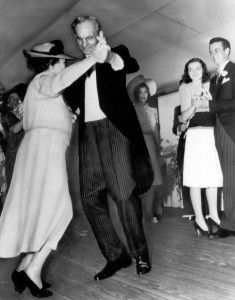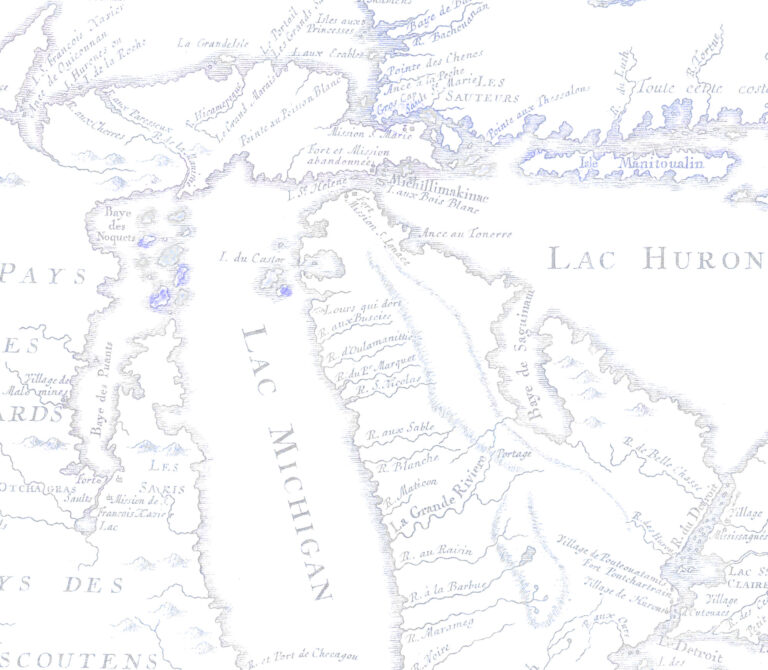
Deportment in Dancing
From Good Morning
by
Henry and Clara Ford,
Dearborn Publishing Company, 1926
Contributed by Glenn Hendrix, with thanks to Glen Morningstar
Henry and Clara Ford published a book on old fashioned dancing called “Good Morning” in 1926. The book has dance instructions, music and a chapter called “Deportment in Dancing” about manners at dances. Some of the advice seems hilarious today. Some seems suited to expensive ballrooms. Some still makes a lot of sense. Here is the Ford’s advice on “deportment in dancing.”
One great advantage of the dance is the aid it gives in correcting defects of deportment. It is a most effective cure for shyness and self-distrust in public. It is a valuable antidote to awkwardness and hesitancy. It develops self-possession and an easy, competent carriage. And it accomplishes these benefits without expense to natural modesty, for modesty of deportment is one of the prime requirements of the ballroom.
The first counsel in deportment is to be natural, be yourself. You are not on exhibition, you are only one of an assembly….In view of the exercise which an evening of dancing involves, bathing is an indispensable preparation, with a complete change of clothing. These are not only points of courtesy toward one’s fellow-guest, but they are strong influences toward removing the causes of self-consciousness in those whose social gifts are still in the process of development.
In other days ladies and gentlemen wore gloves at the dance. This served a use besides mere fashionable appearance. It protected ladies dresses from the perspiring palms of their partners. In the best practice of today, however, this use is served by a handkerchief.
Arriving at the hall, the gentlemen escorts the lady to the ladies’ dressing room, then proceeds to the gentlemen’s dressing room and returns as quickly as possible to escort the lady into the ballroom. Ladies do not enter the ballroom unescorted. On entering the ballroom the lady slightly precedes the gentleman, not side by side, and never arm in arm….The center of the ballroom should not be crossed at any time, either before the dancing commences or between dances. It is an ungainly act and one which no courteous-minded person ever performs with ease.
A gentleman dances at least the first and last dances with the lady whom he escorts to the ball, and as many more as he can secure her consent for. There is no strict rule, and allowance is made for lovers, but conspicuous favoritism exceeds the bounds of good taste.
It is the gentleman’s privilege to ask the favor of a dance of any lady to whom he has been introduced, or to request an introduction through host, hostess or master of ceremonies, or in small informal gatherings and through mutual acquaintance. The gentleman approaches the lady whom he would have as his partner, bows before her (heels together, bow from the waist) and makes his request in any polite terms that he chose, such as “may I have the pleasure of this dance?” May I have the honor of this dance?” The request should never be put in such discourteous terms as “have you this dance open?” “Have you a partner yet?” “Do you want to dance this with me?” A moment’s reflection will indicate the reasons against such forms of speech.
Unless the lady has excellent reasons for refusing, she should accept the courteous offer. If a lady is previously engaged for the dance, if she is tired, if she feels that she does not dance that specific number well enough to warrant her offering herself as a partner, she has the right to refuse, explaining her reason to the gentleman. But after refusing she should not consent to dance than number with another. To do so is extremely rude, it is in the worst possible taste, and repetition will gain for a person an unenviable reputation.
When the number is over, the couple link arms and walk toward the seats, crossing the floor from any position….After the lady is seated and thanked for the dance, the gentleman may converse with her a few moments. If he wishes to leave his partner, he rises, faces her, makes a slight bow, and walks backward two short steps that he may not seem to be turning his back upon her. This rule also applies to a lady taking leave, when, of course, the gentleman rises also.
General suggestions for all dances must include the behavior which is proper to those little accidents which occur in the ballroom. It is sometimes unavoidable that couples will collide, though it is the duty of both partners to forestall this as far as possible. But when it occurs, no extended fuss is necessary, and certainly no expressions of resentment should be made. The simple acknowledgment, “I am sorry,” covers the incident.
The strong odor of tobacco is objectionable both to ladies and gentlemen. There are slovenly smokers who saturate themselves with the oil of tobacco smoke until close proximity to them becomes extremely unpleasant. Cigarets smoked between dances are often held in such a manner that the smoke streams up coat sleeves and coat fronts, so that lips, hands and clothing carry the pungent odor for a considerable time. This is a form of discourtesy which should be carefully guarded against.



